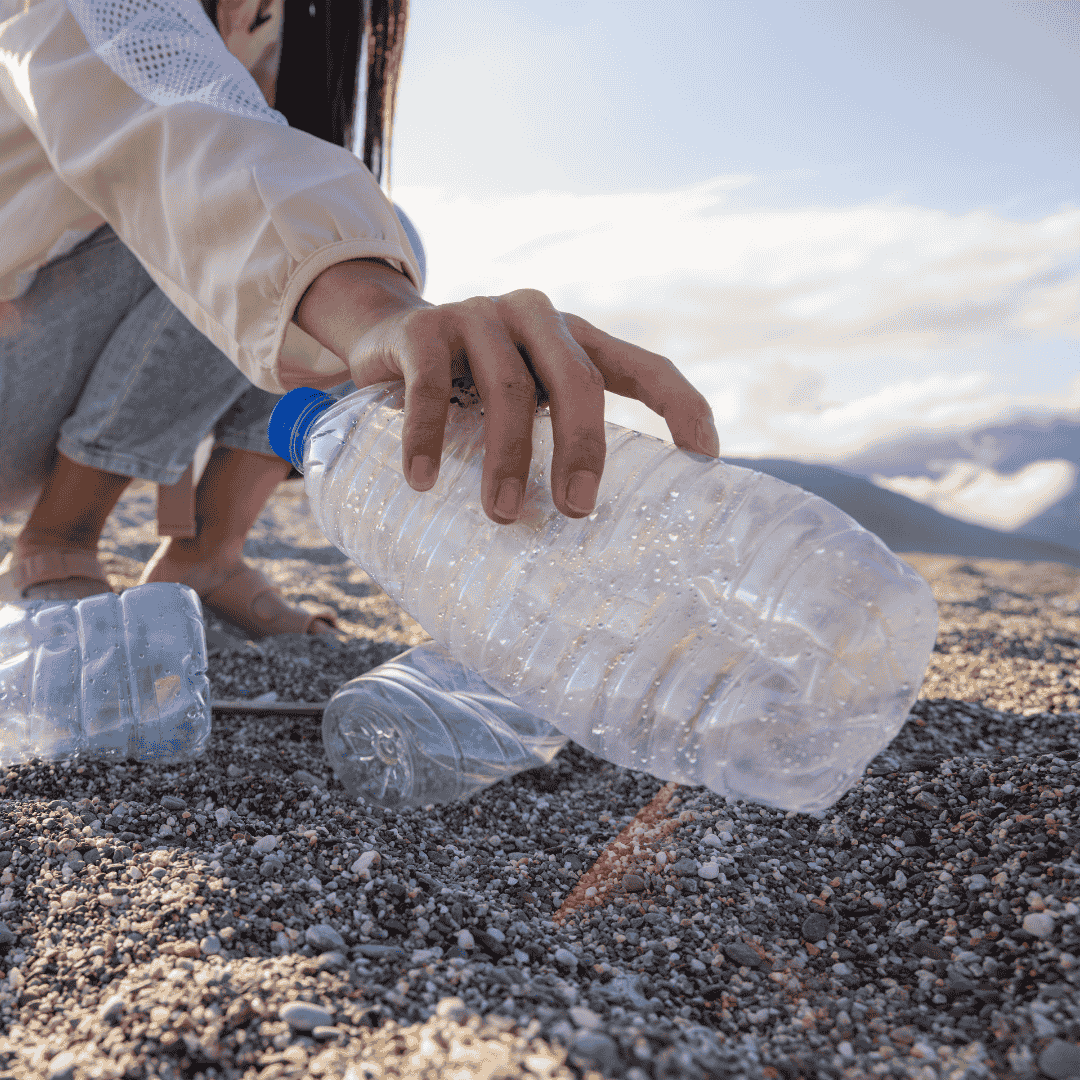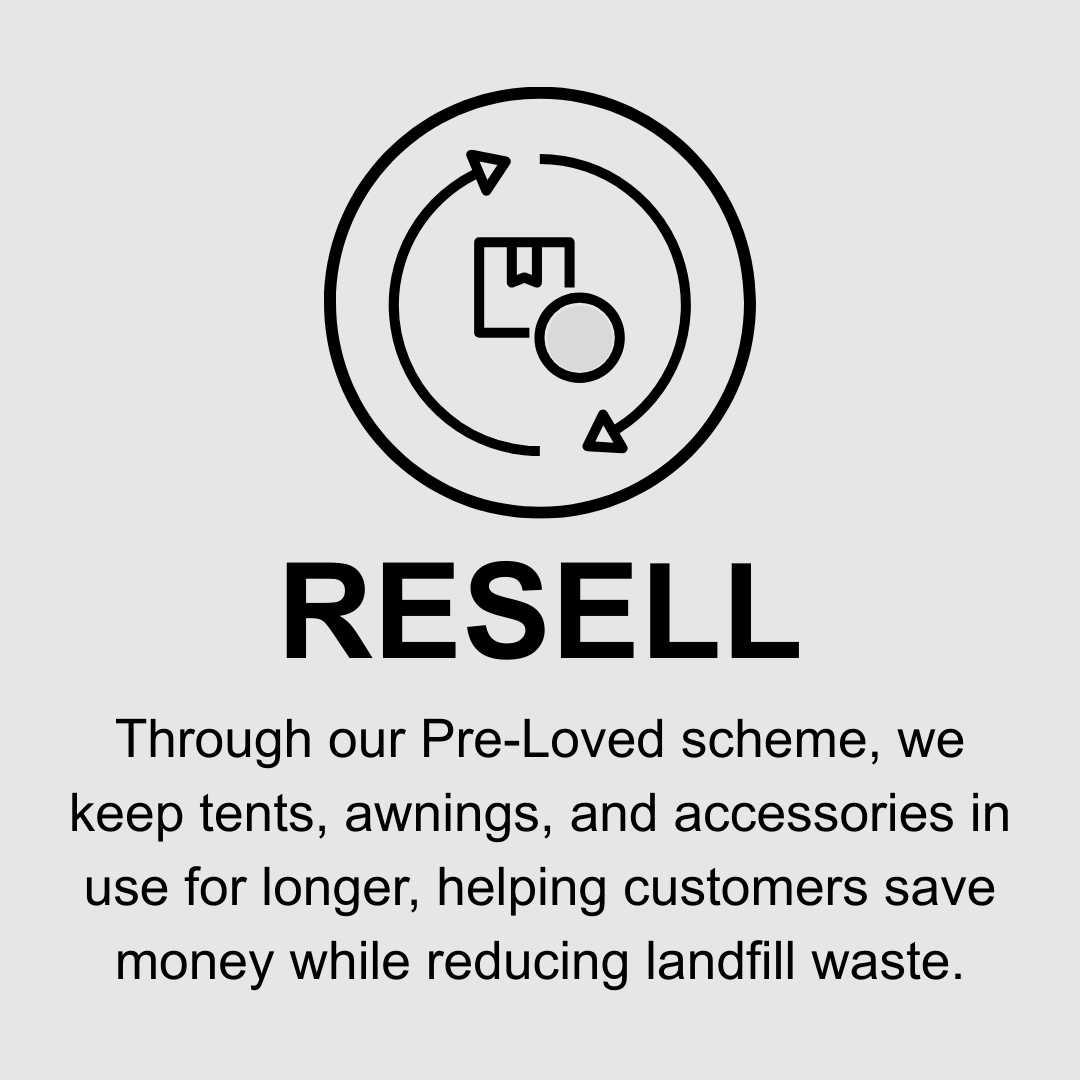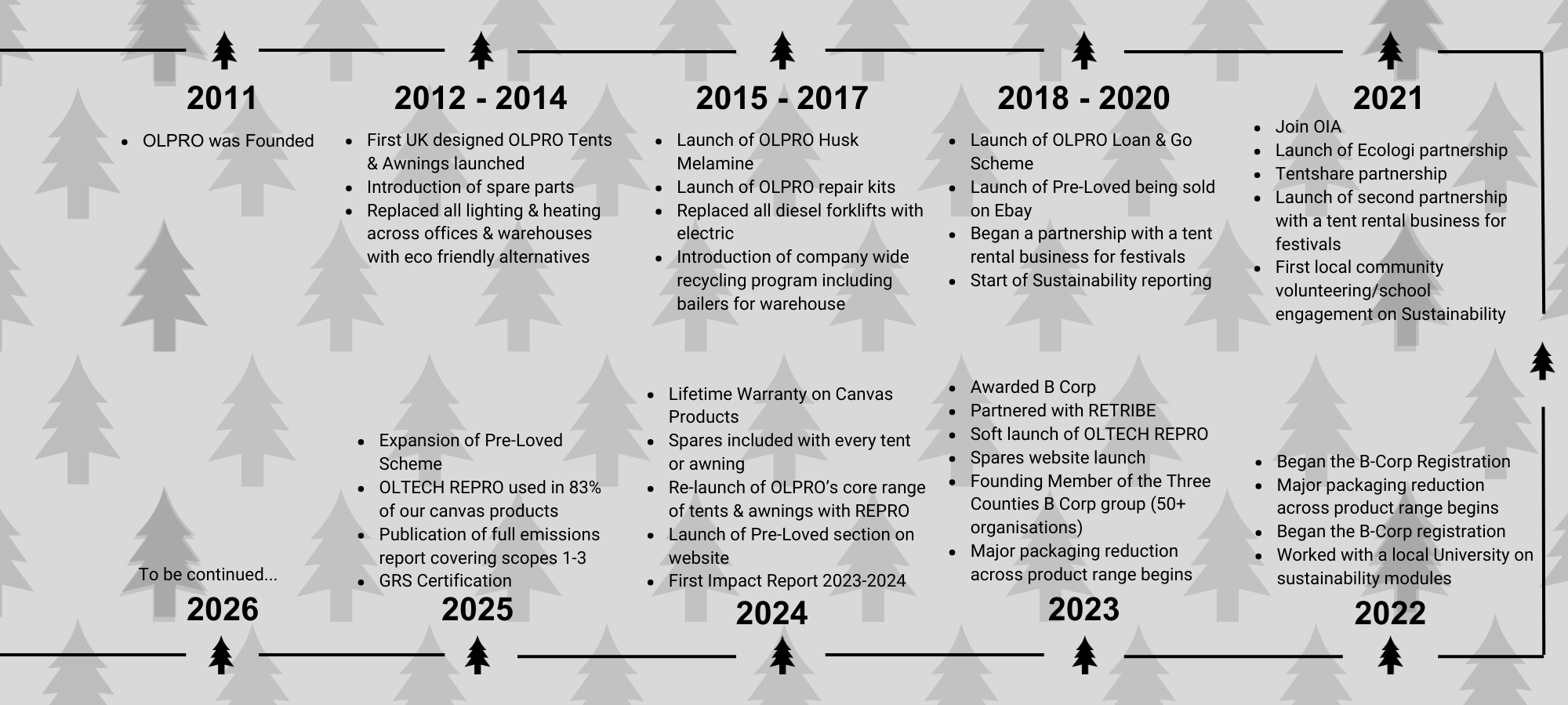
Our Sustainability Vision
At OLPRO, the outdoors isn’t just where our products are used—it’s what inspires everything we do. As a camping brand, we design for people who love fresh air, green spaces, and time in nature. That means we have a responsibility to protect the very environments our customers enjoy.
Our vision is simple: to make camping more sustainable without compromising on quality or experience. We’re working to reduce our environmental impact at every stage—choosing recycled and recyclable materials, extending product lifespans through repair and resale, and planting trees to give back more than we take.

Accountability with B Corp
"Proud to be the first B Corp-certified camping brand"
- Daniel Walton, MD of OLPRO
OLPRO is proud to be the first UK camping brand to achieve B Corp certification, a milestone that proves our commitment to balancing people, planet, and profit. B Corp holds us to the highest standards of accountability and transparency, guiding decisions across our supply chain, innovation, and customer experience.
How we Champion Sustainability
At OLPRO, we champion sustainability by prolonging the life of every product we make, ensuring less waste and more adventures through:
- Innovation in design
- OLTECH® REPRO fabric made from recycled bottles
- Lifetime warranty on canvas tents/awnings
- Spare parts and repair kits
- Our Pre-Loved resale scheme


Our Impact in Numbers
- Become Net Zero by 2035
- 1,714,773 tonnes of CO₂e avoided to date
- 2,500+ Pre-Loved items have been sold since 2022
- 20,000+ trees planted for every tent, awning or backpack sold
- 2,666,600+ bottles have been recycled into OLTECH REPRO Fabric
- 85% of our tents and awnings now use OLTECH® REPRO fabric
- 22,500+ people visit our website each month with access to sustainability resources
Collaborations & Community
Sustainability is stronger when it’s shared, which is why OLPRO works with partners and communities to drive wider impact.
- Education & skills: Working with schools & colleges to talk about sustainable business and donate excess canvas to environmental projects
- Community & events: We work with TentHire.com and two external tent rental businesses to encourage reuse of camping equipment at festivals
- Industry leadership: As founding members of the 3 Counties B Corp Group (50+ organisations), and active participants in the OIA and Chamber of Commerce, we share best practice and help raise sustainability standards across the outdoor leisure sector.

Our Three Principles
Our approach to sustainability is built around three simple principles—Reduce, Repurpose, and Resell—that guide everything we do to create lasting products with less impact on the planet.



OLPRO's Sustainability Journey
Our sustainability journey is built on continuous progress — from launching our Pre-Loved resale scheme to becoming the UK’s first B Corp-certified camping brand — and this timeline highlights the key milestones that show how far we’ve come and where we’re heading next.



 Euro
Euro
 Swedish Krona
Swedish Krona
 Danish Krone
Danish Krone
 Norwegian Krone
Norwegian Krone